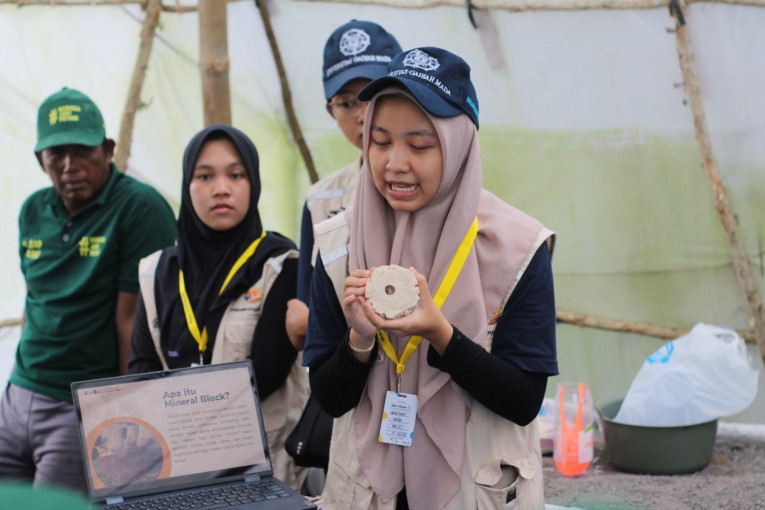
A total of 30 students from the UGM Community Service Program (KKN-PPM UGM) conducted community service activities in Fajar Indah Village, Pulau Besar District, South Bangka Regency, Bangka Belitung Province.
This village has potential in agriculture and livestock farming. UGM KKN PPM students organized training sessions and workshops on compost making, silage production, and mineral block creation to harness this potential.
“One untapped potential is the modification of livestock feed, which can optimize existing agricultural and livestock outputs,” said Ahmad Ammar Jiddan, the Subunit Coordinator, on Friday (Aug. 16).
For the agricultural and livestock training activities, the UGM KKN students involved 15 local farmers and village officials, such as the hamlet head and Village Consultative Body (BPD) members, to participate in training sessions and practical workshops on making silage and mineral blocks.
“We invited them to join us in making silage and mineral blocks,” he said.
Mineral blocks are known to provide livestock with essential minerals during pregnancy and lactation. They are made from coarse salt, cement, and water and can be enriched with mineral premixes to enhance their mineral content.
This additional nutrition can help prevent issues such as paralysis caused by calcium deficiency during pregnancy and increase the productivity of dairy cows.
Ari, the head of Hamlet 4, Sumber Jaya Permai, welcomed the hands-on training in compost and livestock feed production, as it provided valuable knowledge and skills to local farmers.
“Such activities are very beneficial, especially when we can exchange ideas about our livestock conditions with KKN students,” he said.
Dr. Panjono, the UGM field supervisor in South Bangka, added that the outreach activities focusing on producing supplementary feed, such as mineral blocks as a mineral source for ruminants, were quite helpful for the community in making their livestock more productive.
“The enthusiasm of the villagers towards making mineral blocks is very high because their livestock are only fed with forage,” Dr. Panjono said.
Report by: Animal Science UGM/Satria
Editor: Gusti Grehenson
Post-editor: Afif

